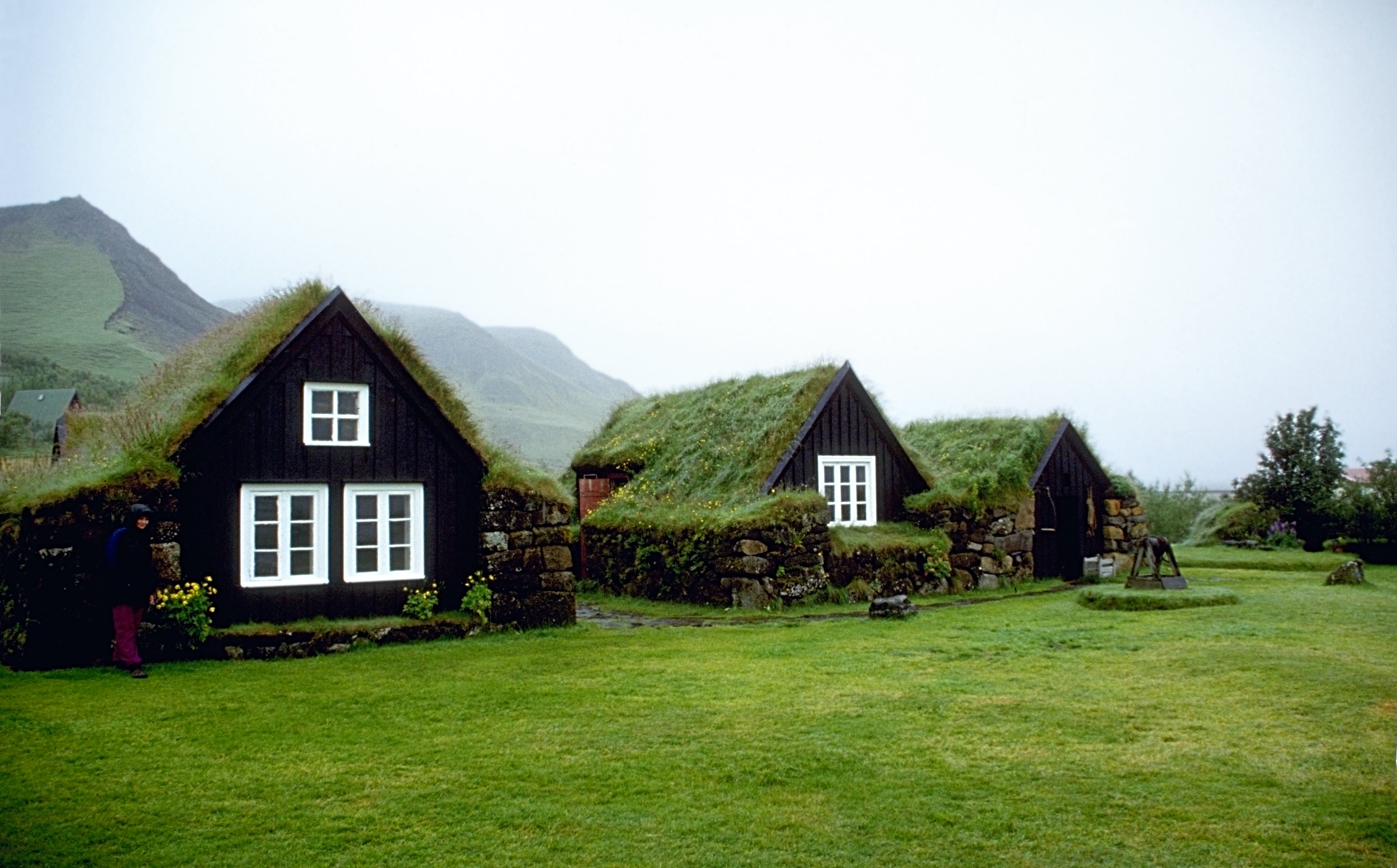2.1.4 Bio-based Products in the Built Environment
Course subject(s)
Module 2. Product

Museum of Skógar, Iceland, photo by Andreas Tille, CC BY-SA 4.0
We mentioned that circularity in the context of the built environment aims at better management of the resources. We are all familiar with the environmental problems associated with construction practices and the use of non-renewable construction materials; for example, Green House Gas emissions (GHGs), waste generation, resources construction. One alternative to contemporary built materials (concrete, steel, iron) are bio-based materials. In the context of the course we refer to bio-based materials as construction materials delivered from plants, trees or animals. They might be used in their original form, modified/treated or in combination with other materials. Building material examples include wood, straw, leathers, crop based materials such as hemp, flax, coconut filberts. At the beginning of the 21st century, plant-based materials have gained popularity as they prove themselves efficient and environmental friendly. The advantages of plant-based materials are centred around the following issues:
-
-
- Energy efficiency
- Avoiding the usage of high-energy materials
- Using local resources and minimizing transportation
- Utilizing industrial and mining waste for production of building materials
- Using renewable materials and energy sources
- Reducing demolition waste
- Recycling building waste
-
Bio-based resources have the potential to provide construction materials with the following benefits:
-
-
- The capture and storage of carbon
- Sustainable production as crops grown annually or as longer harvest-cycle foresting, including secondary products from food growth
- Biodegradability at end-of-service stage (controlled decay inside an anaerobic digester would produce both organic fertiliser and bio-methane to supply energy)
- Exceptionally low or almost zero linear coefficients of thermal expansion, often comparable or better than many man-made products
- The property of controlling temperature in enclosed spaces
- The property of acting as buffer of moisture and balancing the humidity of the indoor environment
- Relatively high specific heat capacity
- Reduced heat transfer
- Excellent performance-to-weight ratios
- Overall lower embodied energy (EE) than man-made or synthetic materials
-
You can read more about biological building materials here.

Circular Economy for a Sustainable Built Environment by TU Delft OpenCourseWare is licensed under a Creative Commons Attribution-NonCommercial-ShareAlike 4.0 International License.
Based on a work at https://online-learning.tudelft.nl/courses/circular-economy-for-a-sustainable-built-environment//.



